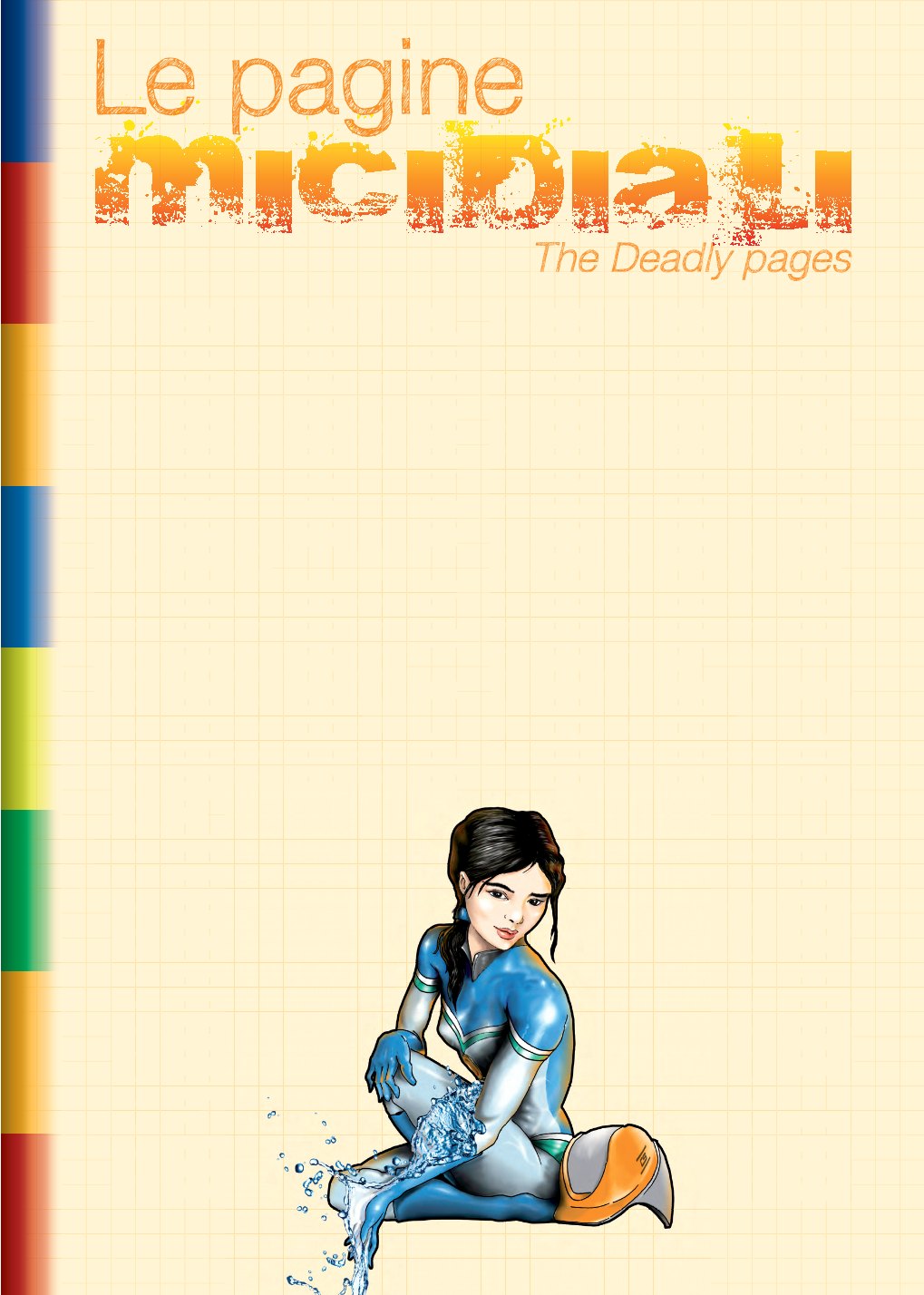
Questo esperimento micidiale inizia con una doman-
da sciocca: l’acqua bagna? La prima risposta che
ci viene in mente è: “si, l’acqua bagna”. Ma non è
sempre così, credimi. Per cui alla domanda: “l’acqua
bagna” la risposta che dobbiamo dare è: dipende.
Dipende cioè dal materiale su cui cade l’acqua. Se
il materiale è poroso, si potrà bagnare, perchè avrà
assorbito acqua. Se un materiale è impermeabile l’ac-
qua scivolerà via. È il caso della carta da forno, che
pur essendo “carta” non si bagna e si può usare per
un’esperienza “micidiale”.
Per iniziare avrai bisogno di: 1 metro di carta da forno,
2 libri (abbastanza pesanti), un contagocce, 2 can-
nucce da bibita, tempere di 2 colori diversi o coloranti
alimentari per dolci e 2 bicchierini di plastica.
1. Stendi la carta da forno sopra un tavolo e blocca
le due estremità del foglio con i libri;
2. Metti nei due bicchierini una piccola quantità di co-
lorante o di tempera, serviranno 2 colori differenti,
quindi, per esempio, un bicchierino conterrà il blu
e uno il rosso;
3. Diluisci il coloran
4. Preleva con i con
prova ad appogg
cia d’acqua sulla
cede? Noterai ch
assorbe l’acqua,
ta con il silicone
rende impermeab
d’acqua rimango
loro si può fare u
gara, come se fo
di Formula 1;
5. Metti la cannu
bocca e prova
fiare delicatam
This deadly experiment begins with a silly question:
does water make things wet? The first answer that
comes to our mind is: "Yes, water makes things wet".
But it is not always like that, believe me. So to the
question: "Does water wet things" the answer that we
give is: it depends. That is, depends on the material on
which the water falls. If the material is porous, it will
get wet, because it has absorbed water. If a material is
waterproof, water will slip away. This is the case with
baking paper, that despite being "paper", does not
get wet and can be used for a "deadly" experiment.
To get started you will need: 1 meter baking paper,
two books (quite heavy), a dropper, two drinking
straws, paints of 2 different colours or food colouring
for cakes and two plastic cups.
1. Spread the baking paper on a table and fix the two
ends of the sheet with the books;
2. Put in the two cups a small amount of dye or paint,
you'll need 2 different colours, then, for example,
one cup will have blue paint, the other one
with a little bit of water;
bit of liquid with the
o gently lay a drop of
ing paper: what hap-
e that the baking pa-
orb water, because it
silicone, a substance
terproof. So the water
.. drops, and you can
g race with them, as if
ula 1 cars;
ut a straw in your
outh and try to blow
ently against the
roplet resting on the
te con un po’ d’acqua;
tagocce un poco di liquido e
iare delicatamente una goc-
carta da forno: che suc-
e la carta da forno NON
perché è stata spalma-
, una sostanza che la
ile. Quindi le gocce
no... gocce, e con
n’entusiasmante
ssero delle auto
ccia in
a sof-
ente
red;
3. Dilute the dye
4. Take up a little
dropper and try t
water on the bak
pens? You'll notic
per does NOT abs
was coated with
that makes it wa
droplets remain.
have an excitin
they were Form
5. P
m
g
d


